 |
 |
 |
| |
High PrEP Uptake, Good Follow-up, With Mobile Screening in Florida
|
| |
| |
IDWeek, October 2-6, 2019, Washington, DC
Mark Mascolini
Almost all PrEP-eligible people screened by a mobile unit in south Florida--most of them Hispanic immigrants--agreed to start PrEP and received free medication in a 7-month study [1]. Almost three quarters of participants returned for their first scheduled follow-up visit.
If taken as directed, preexposure prophylaxis (PrEP) with tenofovir/emtricitabine prevents HIV infection. But PrEP use remains suboptimal in some groups with high HIV risk, including black and Hispanic men who have sex with men (MSM) in the United States [2]. University of Miami researchers who conducted this study noted that PrEP has not caught on in Miami, although it is the metropolitan area with the highest new-HIV rate in the United States. This research team previously documented several local barriers to PrEP use, including cost, transportation, stigma, immigration concerns, and difficulty finding supportive providers.
In an attempt to address these obstacles, they planned and tested mobile clinic services as a way to spur PrEP uptake in high-risk populations. With community advice and analysis of HIV incidence, they selected four local sites to target with a van offering HIV and sexually transmitted infection (STI) testing and PrEP delivery. Visits and testing cost users nothing. The multilingual staff includes a medical provider, pharmacist, PrEP counselor, and logistics manager. The van accepts self-referrals, and a community-based organization bolsters patient recruitment through social media including Facebook, Instagram, and dating apps.
Initial evaluation from October 2018 through April 2019 focused on 229 clients, 168 of them (73%) eligible for PrEP. The group had a median age of 32 years, 78% were Hispanic, 10% black, and 4% non-Hispanic white. Most clients, 92%, were cisgender men, 6% cisgender women, and 2% transgender women. Almost three quarters of these people, 74%, described themselves as MSM. High proportions were born outside the United States (74%) and had no health insurance (73%).
Among the 168 PrEP-eligible people, 166 (99%) received PrEP medications. Among 77 clients enrolled for more than 3 months, 55 (71%) completed a scheduled follow-up visit. Forty-five people (27%) had a new bacterial STI diagnosis at their initial visit, as did 9 (12% of 77) at a follow-up visit. Six people (3.6%) had a reactive HIV test as their initial visit.
The University of Miami team concluded that mobile HIV prevention services including PrEP are "feasible and effective in engaging Hispanic/Latino immigrant MSM in Miami." Because of high demand in this initial effort, they plan to expand capacity and outreach to other groups with high HIV risk. The investigators will also work with the Florida Department of Health to focus resources via genetic cluster analysis and traditional epidemiology.
Instagram address
@mobileprep
References
1. Doblecki-Lewis S, Kobetz E, Byrne J, et al. PrEP on the go! Implementation of mobile PrEP, STI, and HIV prevention services in south Florida. IDWeek, October 2-6, 2019, Washington, DC. Abstract 1965.
2. Siegler AJ, Mouhanna F, Giler RM, et al. The prevalence of pre-exposure prophylaxis use and the pre-exposure prophylaxis-to-need ratio in the fourth quarter of 2017, United States. Ann Epidemiol. 2018;28:841-849.
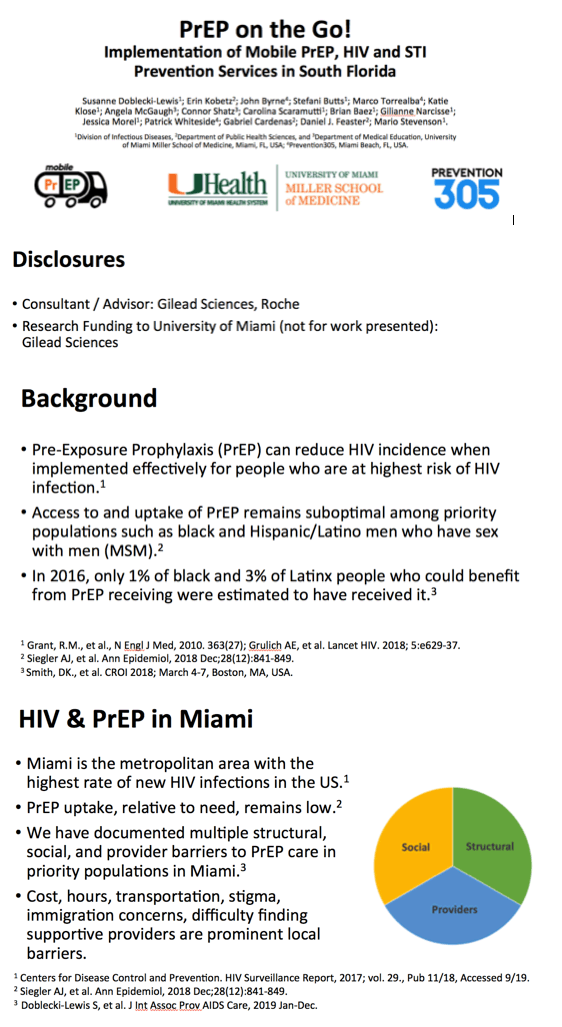
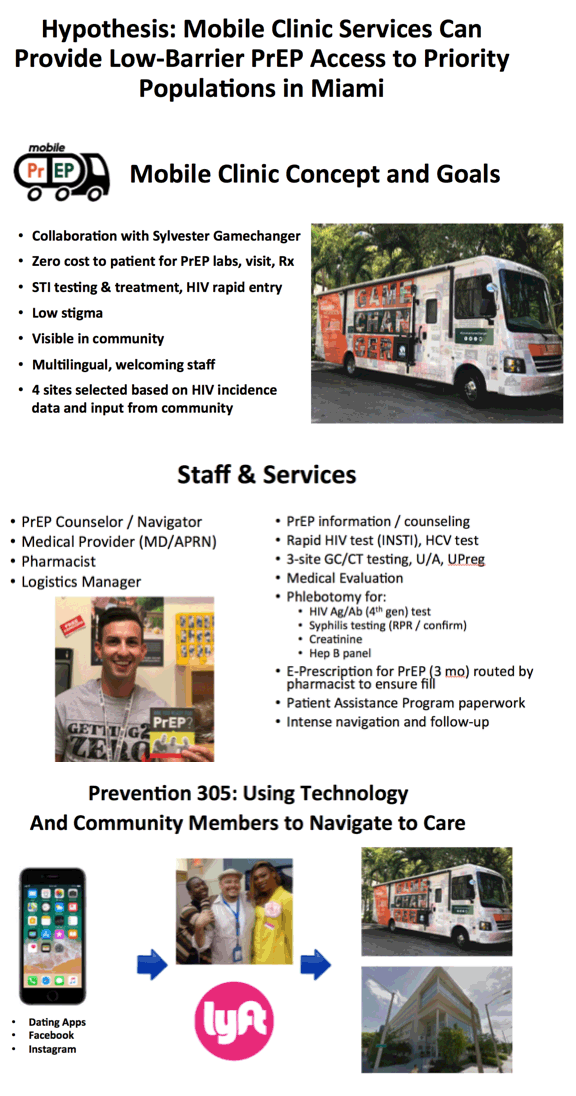
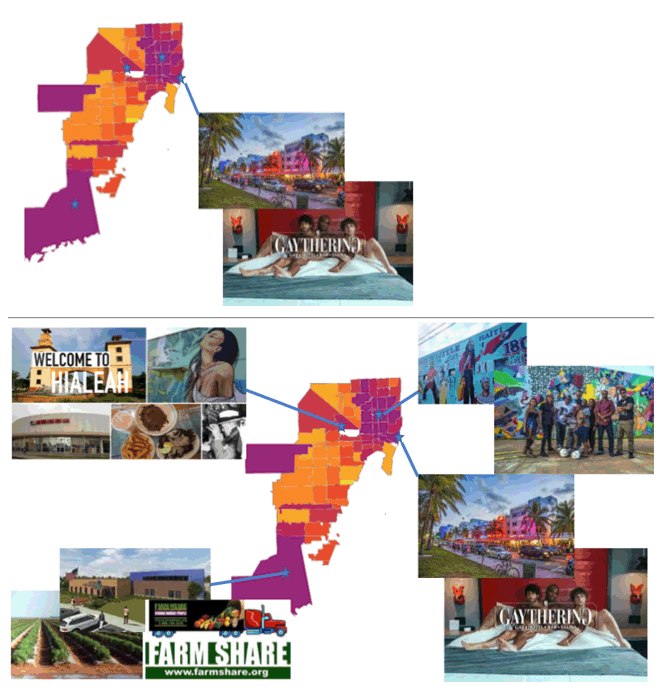
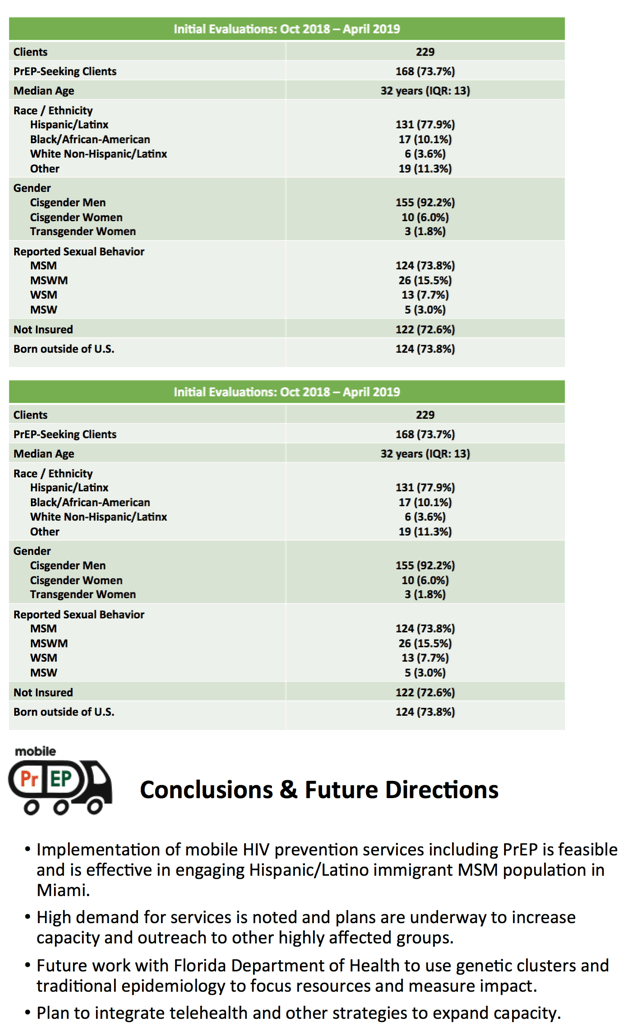
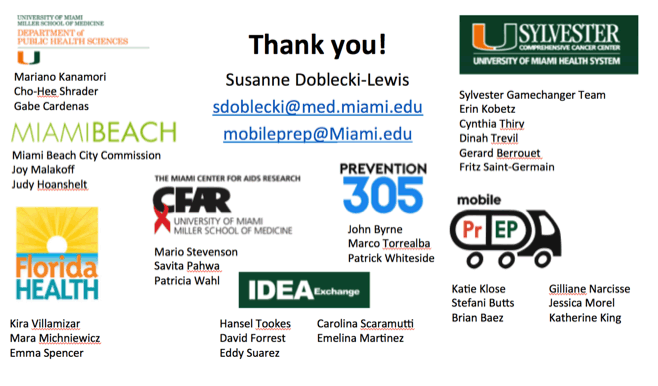
|
| |
|
 |
 |
|
|